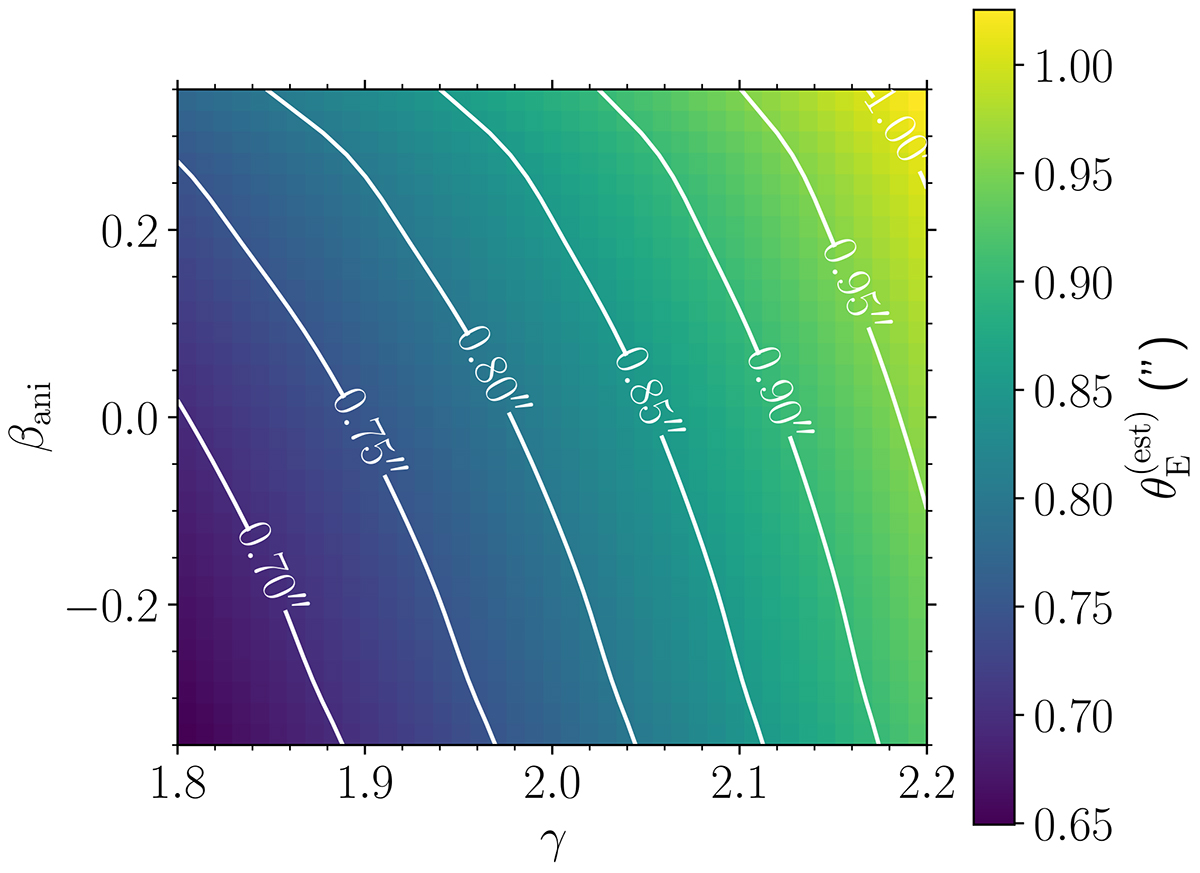Fig. A.1.

Download original image
Estimated Einstein radius of a power-law lens with θE = 1″, as a function of density slope and orbital anisotropy. The lens is at zg = 0.2, with a half-light radius Re = 7 kpc, and the Einstein radius is computed with respect to a source at zs = 0.6. White lines connect points of constant ![]() . These are also points of constant velocity dispersion. In general,
. These are also points of constant velocity dispersion. In general, ![]() : this is because the line-of-sight velocity dispersion, which is used to estimate
: this is because the line-of-sight velocity dispersion, which is used to estimate ![]() , is smaller than the three-dimensional velocity dispersion of a singular isothermal sphere, due to projection effects.
, is smaller than the three-dimensional velocity dispersion of a singular isothermal sphere, due to projection effects.
Current usage metrics show cumulative count of Article Views (full-text article views including HTML views, PDF and ePub downloads, according to the available data) and Abstracts Views on Vision4Press platform.
Data correspond to usage on the plateform after 2015. The current usage metrics is available 48-96 hours after online publication and is updated daily on week days.
Initial download of the metrics may take a while.


